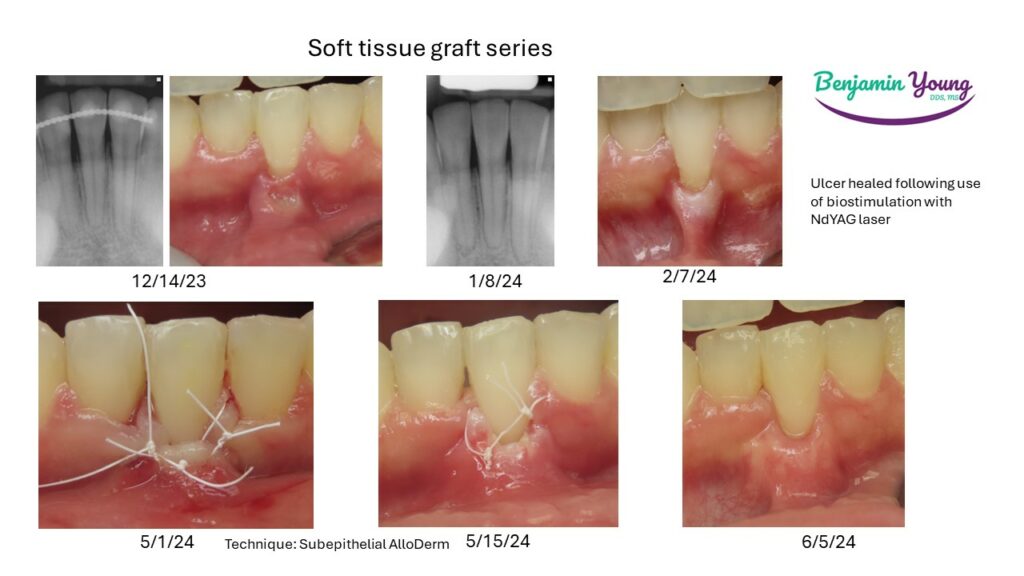Gum Recession Treatment
Minimally invasive Gum Grafting to correct Receded Gums
Gum Recession Treatments
1
Gum grafts to restore root coverage
To restore the natural gum line around teeth where the gums have receded, Dr. Young uses a minimally invasive “tunneling” technique for gum grafting where he gently creates a pouch that runs sideways across your gums, underneath your outer layer of gum tissue.
The graft material is placed into the pouch to thicken the gums. After this, the outer layer of gum tissue is secured. When the site has healed, you will have a new, natural-looking gum line supported by thick, healthy gum tissue.
2
Building back thin gums
Gums that are too thin cannot support the teeth adequately and will eventually recede. Dr. Young can gently add gum tissue to thin gums to build up thickness and strength. This will preserve the health of your gums and prevent further recession.
3
Augmenting the gum around an implant
Sometimes after placing an implant, the gum line is not high enough or thick enough to completely hide the implant once the dental crown is placed. This is both a cosmetic and functional concern, as proper gum support is needed for full implant stability.
Dr. Young will gently graft tissue around the implant to build back a complete gum line so the implant is invisible and properly supported.
4
Frenectomies
A frenum is a small fold of soft tissue that connects two parts of your mouth together and limits the motion of one of the connected parts. You can find a frenum on the inside of your upper lips and lower lips, and on the underside of your tongue.
Oversized frena inside the lips can pull at the gums closest to where the frena are attached and cause the gums to recede. When needed, Dr. Young will use a gentle laser to reduce the size of the frenum and bring it down to a suitable size and strength.



